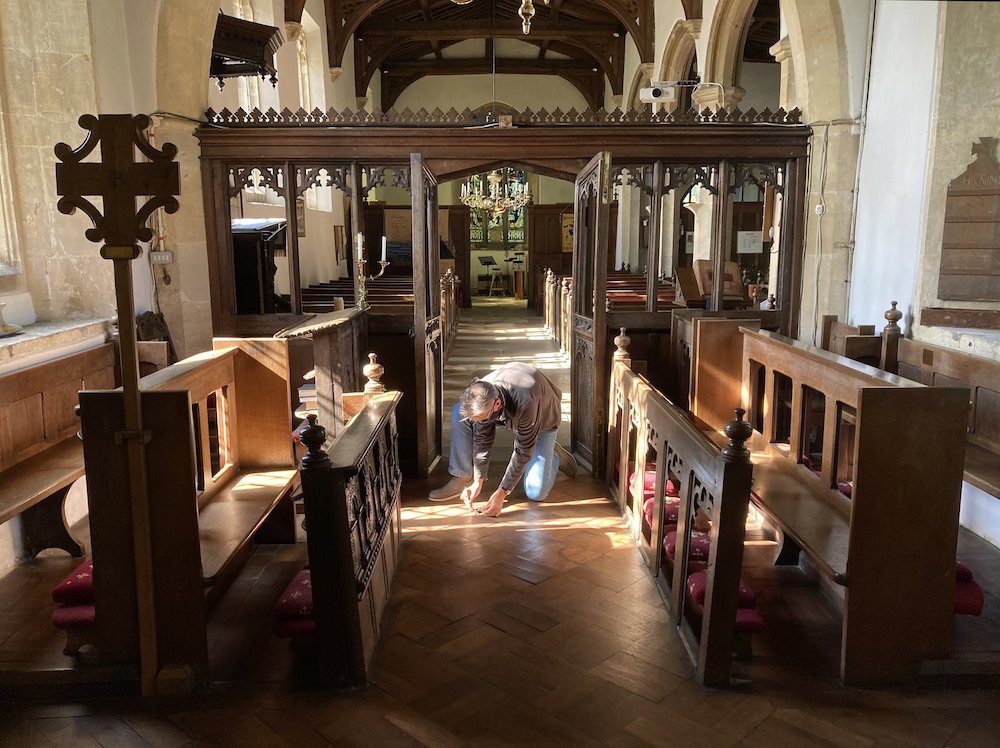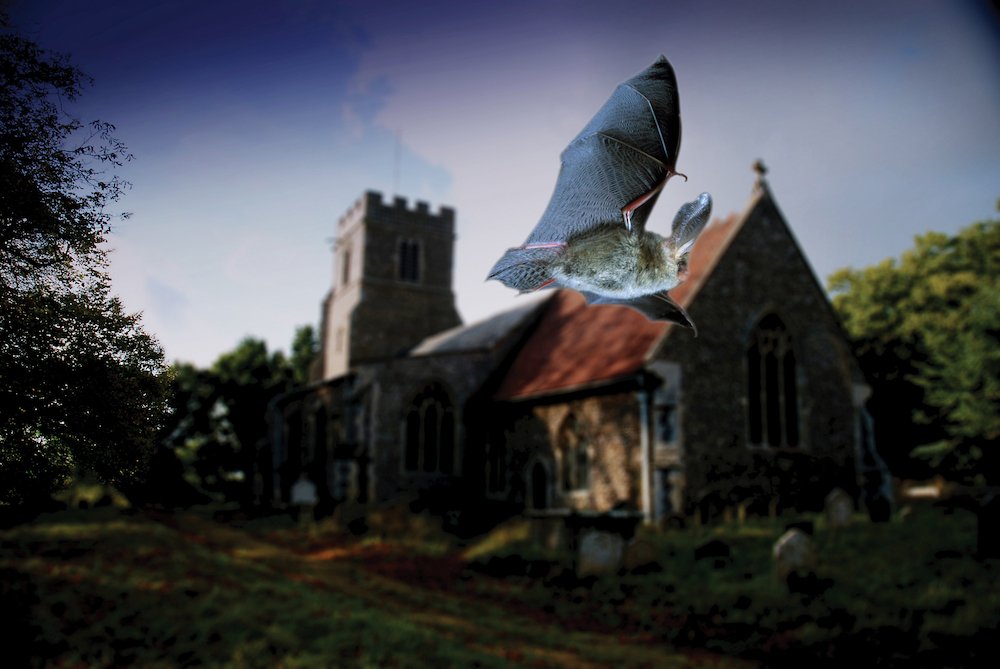15 churches and counting! Bats in Churches volunteers Phil and Ilene on their batty summer

Volunteers Phil Atkin and Ilene Sterns have so far surveyed an astonishing 15 churches for the National Bats in Churches survey. Here, Ilene shares some of their experiences and highlights, as well as her thoughts on what makes volunteering so rewarding.
Like many birds (and bats!), my husband, Phil Atkin, and I are migratory. As soon as we settle into a new home, we look for volunteering opportunities with local wildlife and conservation projects. When we moved to Cornwall, we spent three summers surveying for rare arable plants. Cornwall was also where we first learned about bats in churches.
St Cuby is an ancient Grade I listed church in Tregony and home to a small roost of brown-long eared bats, who are often active during the day. Whenever the church organist plays a particularly loud note, the bats take off and fly up and down the nave, right over the heads of the congregation, who are not the least bit daunted by their presence.
Even though the bats have caused some damage to the organ and St Cuby does need quite a bit of cleaning, the church community is happy to have the brown long-ears as tenants. In fact, when the church was trying to raise money for essential repairs, they were told by funders that the bats were a real asset. Just like the swifts nesting in St Cuby’s tower, the bats could attract visitors who might otherwise have passed by the church without stopping.
Making a difference to people's lives

In early 2021, we left Cornwall for North Wiltshire. Only a few weeks after we had arrived, Phil joined an online talk about bats in historic churches. When he heard that Bats in Churches were looking for volunteers, he signed up immediately. Not only was he keen to learn more about bats, but he was also eager to visit the ancient churches near our new home. And, as a software developer, he was also hoping to design and build his own low-cost bat detector.
His enthusiasm for bats was so infectious that I decided to join him for the surveys. As an artist, I was intrigued by the opportunity to explore historic churches that I might otherwise have missed. I was also excited about taking part in a citizen science project that could make a real difference to peoples’ lives.
The churchwardens we contacted were delighted to have their churches surveyed, and keen to share their knowledge and expertise. We were treated to private tours of Medieval wall paintings and were shown round vestries and towers. We were also told exactly where to look if we wanted to find bat droppings and urine stains. We came away from each survey with a huge amount of respect for the people who work so hard to keep these beautiful ancient buildings alive.
Although we had intended to limit our surveys to a few local churches, we soon realised that we were enjoying the work so much that we wanted to extend our reach. So we put a pin in the map and drew a circle around it. We managed to survey 15 of the churches on our list, including an unexpected outlier: St Helen’s on Lundy, which we surveyed while we were holidaying on the island.
What next?

As I write, we are waiting (with bated breath) for the DNA analyses of the bat droppings from our churches, as well as the results of the sonograms. How many species did we record? Did we find any rare bats? The churchwardens who helped us are looking forward to the scientific analyses as much as we are. Even though most of the churches we surveyed are happy to live alongside their bats, some have asked for help with issues such as conservation cleaning. Fortunately, Bats in Churches are able to offer a wide range of resources to help churches live in harmony with these fascinating creatures.
After only a few months of volunteering, Phil and I have both totally lost our hearts to bats. I am now the proud owner of an Echo Meter bat detector, and Phil is busy adding features to his homegrown detector, which is being field-tested by bat experts. And we will both be volunteering with Bats in Churches during the winter, while we eagerly await the start of the 2022 survey season.
I am also working on another bat-related project: helping a village church to rewild part of its churchyard. Our goal is to create a diversified natural environment that will attract and support a wide range of wildlife.
Not only will this allow the church to work more closely with the local primary school, but it will also encourage the many visitors to the village to spend time in the tranquil setting of the churchyard. The newly rewilded churchyard will be the perfect setting for citizen science projects of all kinds, from the Big Butterfly Count to evening bat walks. The project will require very little investment but it will put wildlife at the centre of our lives, which is a goal we can all aspire to.

